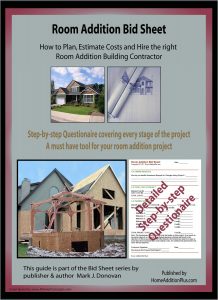Every Homeowner should own a Framing Square
By Mark J. Donovan
|
|
A framing square is an extremely important and useful tool for both carpenters and Do It Yourself homeowners. It is used for many home construction projects; however it is most frequently used in framing projects. It is an excellent tool for laying out common roof rafters and for framing stairs and hip roofs.
A framing square is constructed out of aluminum or steel. It is one flat sheet of metal that has two arms positioned at a right angle to each other. One arm is referred to as the tongue and is 1.5 inches in width and 14-18 inches in length. The second arm is referred to as the blade and is two inches in width and 24 inches in length. The corner of the framing square is referred to as the heel. |
Each side of the framing square has graduated scales on it. They are in 1 inch increments as well as 1/8th, 1/10th, 1/16th, and 1/12th inch increments. On the face of the square (usually determined by the manufacturer’s label) the graduated scale is broken down to 1/8th and 1/16th intervals. On the back of the square the graduated scale is broken down into 1/10th and 1/12th inch intervals.
| For most homeowners a framing square is useful for simply making right angle cuts or as a straight edge tool. To make a right angle cut using the framing square, the blade of the framing square is placed up against the edge of the stick of lumber, such as a 2”x4”. The tongue lies perpendicularly across the top of the lumber. With a marker, a line is then made along the edge of the tongue. With a perfectly perpendicular line, relative to the length of the 2×4, a straight perpendicular cut can be made. The Empire Level 1240 Fat Boy Heavy Duty Aluminum Framing Square, 16-Inch by 24-Inch is an excellent framing square for any framing application. |
For framing stair stringers, common roof rafters or hip roofs, a more extensive understanding of how to use the framing square is necessary. A book on framing, such as the House Framing: Plan, Design, Build (Ultimate Guide), can provide the detailed instructions for utilizing a framing squire for these types of applications.
Besides the framing square there are several other types of squares used by home building contractors and homeowners alike.
| Drywall Square
The drywall square, such as the Johnson Level & Tool RTS241 RockRipper 24-Inch Drywall Scoring Square, has a blade that is 4 feet in length to work with large sheets of drywall. Try Square The Try Square is frequently used in cabinet making, as it is smaller and can be used for checking edges and corners. |
 |
Sliding T-Bevel Square
This square is quite versatile. It has a moveable blade that is useful in copying and transferring angles. This is extremely useful when installing baseboard trim, or molding.
| Speed Square
The speed square is useful for making square cut lines and for acting as a fence when making crosscuts. It also has graduated markings along its diagonal edge for aid in laying out stair treads, common roof rafters and angled trim. If you are a homeowner and have aspirations of performing any type of small home repair or home remodeling project a square is a useful tool to have. At a minimum I would highly recommend owning a framing square, a sliding T-Bevel square, and a Speed square. All are relatively inexpensive and have many uses. |
|
For more help on building a home addition, see HomeAdditionPlus.com’s Home Addition Bid Sheets. Our Home Addition Bid Sheets provide you with the knowledge and information on how to plan a home building project, and what to look for when hiring contractors. They also include detailed cost breakdown tables and spreadsheets for estimating your own new home construction building costs.
Related Information
- Tips on Buying a Reciprocating Saw
- Tips on Buying a Carpenters Level
- Tips on Buying a Circular Skill Saw
Additional Framing Resources from Amazon.com
 |
 |
Free Home Addition Price Quotes with No Obligation!
Fill out our 3-5 minute quick and easy form, and receive a free price quote on a house addition from one of our prescreened and licensed home addition contractors. This process is free and there is no obligation to continue once you receive your home addition price estimate.
